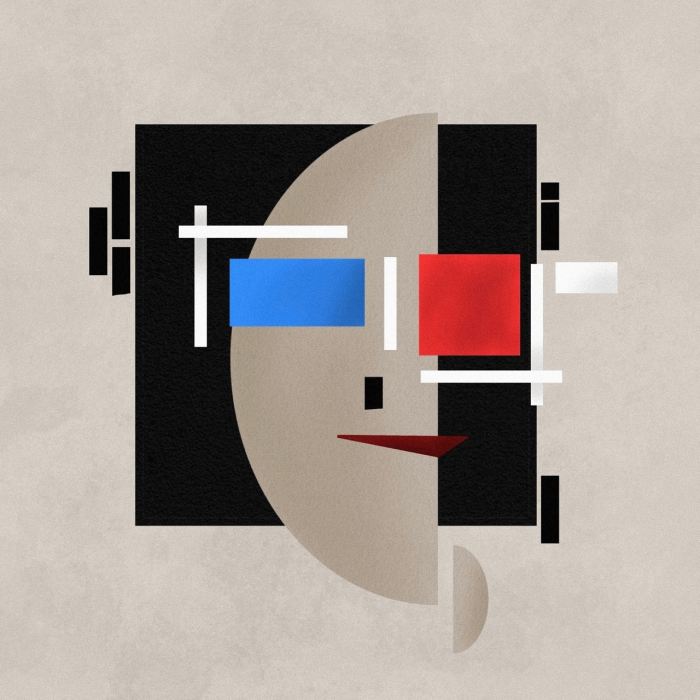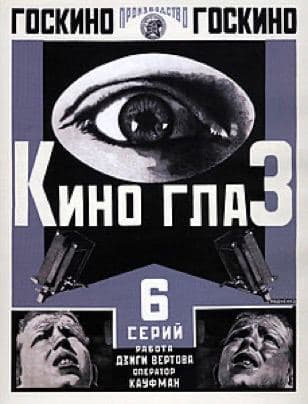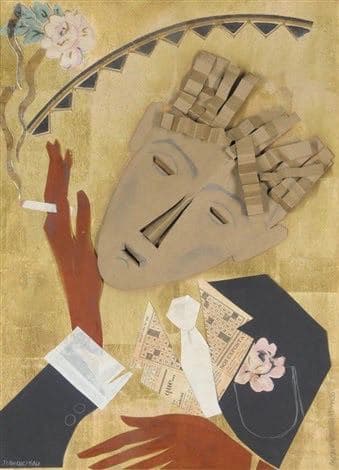SupremePunk #110

Visual Memory
This Punk is inspired by CryptoPunk #6075 the work of Dziga Vertov. This work depicts a semicircle — the face of a Punk, whose eyes are hidden behind a schematic image of 3-D glasses. The pure color palette and rectangular shapes of the glasses resemble the style of Pete Modrian, but this SupremePunk is on the background of a black square that looks like a movie camera, which shifts the focus of the picture from the Punkitself to the symbols depicted: the camera and glasses.

Dziga Vertov — Kinoglaz, 1924
And here the analogy of the image with the cinema of Dziga Vertov is already felt. One of his most famous films is the experimental film "Kinoglaz" (1924). There is no single storyline in it, and there are no actors. Ordinary people took part in the shooting: a postman, a doctor, a firefighter, a cyclist. In addition to depicting metaphors and conveying philosophical ideas, the cameraman built the frame in an avant-garde way, sometimes shifting the horizon, then radically changing the angle in order to develop visual thinking and use it as a means of expression. In this regard, it is possible to identify the "Movie Eye" with the gaze of the viewer, who himself can capture the beauty, pay attention to the location of objects, the picturesqueness of the surrounding world.
This is similar to what is shown in SupremePunk, where Punk is depicted on a par with a movie camera. Punk's eyes and a movie camera lens are tools for capturing the beautiful in the world around us. Therefore, they are depicted side by side. They are even similar in their inconstancy of memory: just as a film can easily light up, so human visual memory can easily forget what was seen, say, a day ago.

Maria Vasilyeva — portrait of Jean Cocteau, 1917
This SupremePunk technique resembles an application, which, in turn, resembles a portrait of Jean Cocteau, created by Maria Vasilyeva. If this Punk were clothed in material forms, then his 3-D glasses could be made of multicolored glasses, like the smoke coming from the cigarette of a French film director. The rim of the glasses could be made of napkins, like Jean Cocteau's tie. The details of the camera could be made of black cardboard - exactly the same as the costume in the portrait of Maria Vasilyeva is made of. The diagonal of the lips, for example, could be created with a strip of velvet. It turns out that even in a virtual format, there is such a texture in SupremePunk that it could be embodied in reality. Moreover, the visual similarity with the portrait of Jean Cocteau draws an ideological cinematic arch in the concept of this Punk. It reflects the ideas of the nascent cinema and shows their heredity in modern times with the help of 3-D glasses, which began to be actively used in the mass film industry only in the second half of the XX century.

Buy

Gallery:
CryptoPunk 6075 that has been taken as a base

Your transaction is in progress

You have connected to the wrong network

Transaction is successful!


